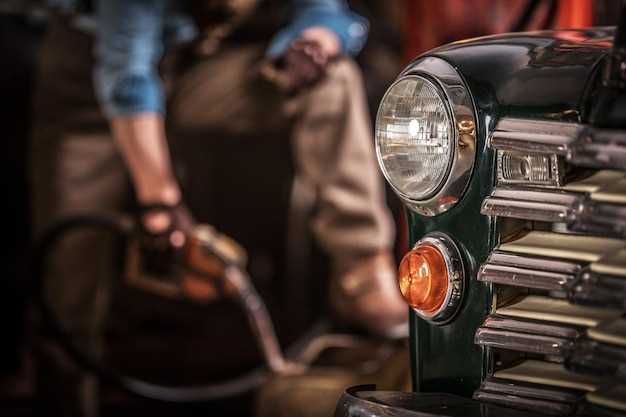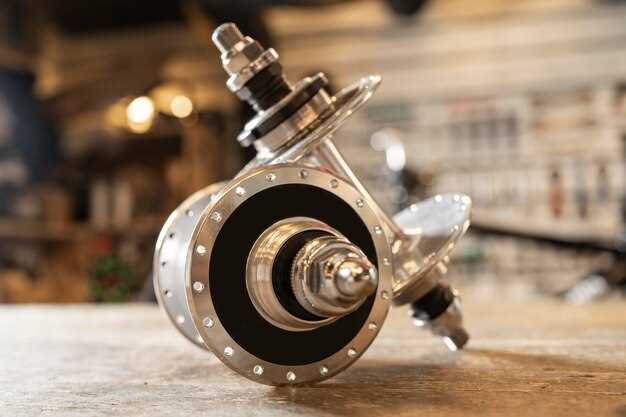Engine Rebuild Tips for Classic Fiat Owners

The allure of classic Fiat vehicles lies not only in their timeless design but also in the engineering craftsmanship that defines them. For many enthusiasts, restoring a classic Fiat involves more than just cosmetic upgrades; it often necessitates a thorough engine rebuild. This intricate process allows owners to revive the heart of their vehicle, ensuring optimal performance and longevity.
Rebuilding an engine is both an art and a science, requiring a careful approach and attention to detail. Classic Fiat models, known for their unique character and engaging driving experience, demand a specific set of considerations during the rebuild process. From sourcing quality parts to understanding the nuances of the original engineering, each step is crucial to achieving a successful restoration.
In this article, we will explore essential tips for classic Fiat enthusiasts undertaking an engine rebuild. Whether you’re a seasoned mechanic or a novice hobbyist, these insights will help you navigate the challenges and celebrate the joy of bringing your classic Fiat back to life, one piston at a time.
Choosing the Right Parts for Your Fiat Engine Rebuild

When embarking on a Fiat engine rebuild, selecting the right components is crucial for achieving optimal performance and reliability. Start by assessing the condition of your existing engine parts. This evaluation will help you determine which components can be reused and which should be replaced.
For critical engine parts such as pistons, rings, and bearings, prioritize high-quality aftermarket or OEM (Original Equipment Manufacturer) parts. While OEM parts ensure compatibility and reliability, aftermarket options can sometimes offer improved performance or cost savings. Make sure to verify the specifications and material quality for any parts you consider.
Additionally, consider upgrading certain components for enhanced performance. For example, high-performance camshafts and lightweight flywheels can significantly improve engine responsiveness. However, ensure that any upgrades match the intended use of your Fiat. A balance between performance and daily drivability is essential.
Gaskets and seals should also be carefully chosen. Opt for durable materials that can withstand the engine’s operating conditions, such as multi-layer steel gaskets. This will help prevent leaks and ensure a tight seal throughout the engine.
Finally, don’t overlook the importance of supporting components such as the fuel system, ignition system, and cooling system. Upgrading fuel injectors or using a high-quality ignition system can improve overall engine efficiency and performance. A well-rounded approach will ensure that your Fiat engine rebuild is successful and long-lasting.
Step-by-Step Guide to Disassembling a Fiat Engine

Disassembling a Fiat engine is a crucial step in the rebuild process, allowing you to assess the condition of all components and replace those that are worn or damaged. Follow this detailed guide to ensure a successful disassembly.
1. Preparation: Begin by gathering all necessary tools, including socket sets, wrenches, screwdrivers, and an engine hoist. Ensure you have a clean workspace with enough room to lay out all parts in order.
2. Disconnecting Components: Start by disconnecting the battery. Then, drain all fluids from the engine, including oil and coolant. Remove the air intake, exhaust manifold, and any accessories such as the alternator, starter motor, and power steering pump.
3. Removing the Timing Belt: Carefully take off the timing belt or chain. Mark the position of the pulleys and timing marks to assist in reassembly. Removing the belt will expose the camshaft and allow easy access to the cylinder head.
4. Taking Off the Cylinder Head: Unbolt the cylinder head, being cautious of any studs. Lift the head straight up to avoid damaging the gaskets. Inspect the head for cracks or warping before moving on.
5. Disassembling the Block: Next, remove the rocker arms, pushrods, and lifters. Make sure to keep them organized for later reinstallation. Following this, unbolt the main bearing caps and carefully remove the crankshaft, paying attention to any shims or spacers.
6. Pistons and Rods: Extract the pistons from the block by unbolting the connecting rods. Take care not to scratch the cylinder walls. Inspect each piston and rod for signs of wear.
7. Final Check: Once all components are disassembled, clean each part thoroughly. Inspect for any damage or excessive wear, documenting any findings. This step is essential for planning the rebuild effectively.
Following these steps will provide a solid foundation for your Fiat engine rebuild. Patience and attention to detail are key to ensuring a smooth process from disassembly to reassembly.
Maintaining Authenticity in Engine Rebuilds for Classic Fiats
Preserving the authenticity of classic Fiats during an engine rebuild is paramount for enthusiasts dedicated to maintaining the integrity of these timeless vehicles. It begins with sourcing original parts that match the specifications of the factory-installed engine. This may require extensive research and networking within the classic Fiat community to find reliable suppliers or salvage original components from donor vehicles.
When disassembling the engine, document each step meticulously. Take photographs and label parts to ensure they can be reassembled in their original configuration. Attention to detail during reassembly is crucial; using correct fasteners and adhering to torque specifications helps maintain the engine’s authenticity and performance.
Consider retaining original engine numbers and casting marks, as these identifiers enhance the vehicle’s value and historical significance. If replacement parts are necessary, opt for OEM (Original Equipment Manufacturer) components or high-quality reproductions that mirror the original designs. Avoiding aftermarket modifications ensures the rebuild remains true to the original intent of the manufacturer.
Furthermore, consult factory service manuals for precise assembly procedures and specifications. Many classic Fiat models have unique engineering traits that require specific techniques during the rebuild process. Knowledge of these nuances will aid in avoiding common pitfalls that can detract from the vehicle’s authenticity.
Finally, after the rebuild, regular maintenance should be approached with the same level of authenticity in mind. Use recommended fluids and follow the original service intervals to keep the engine running as intended. By prioritizing these practices, enthusiasts can ensure their classic Fiat engines not only perform reliably but also remain a testament to the brand’s rich heritage.



